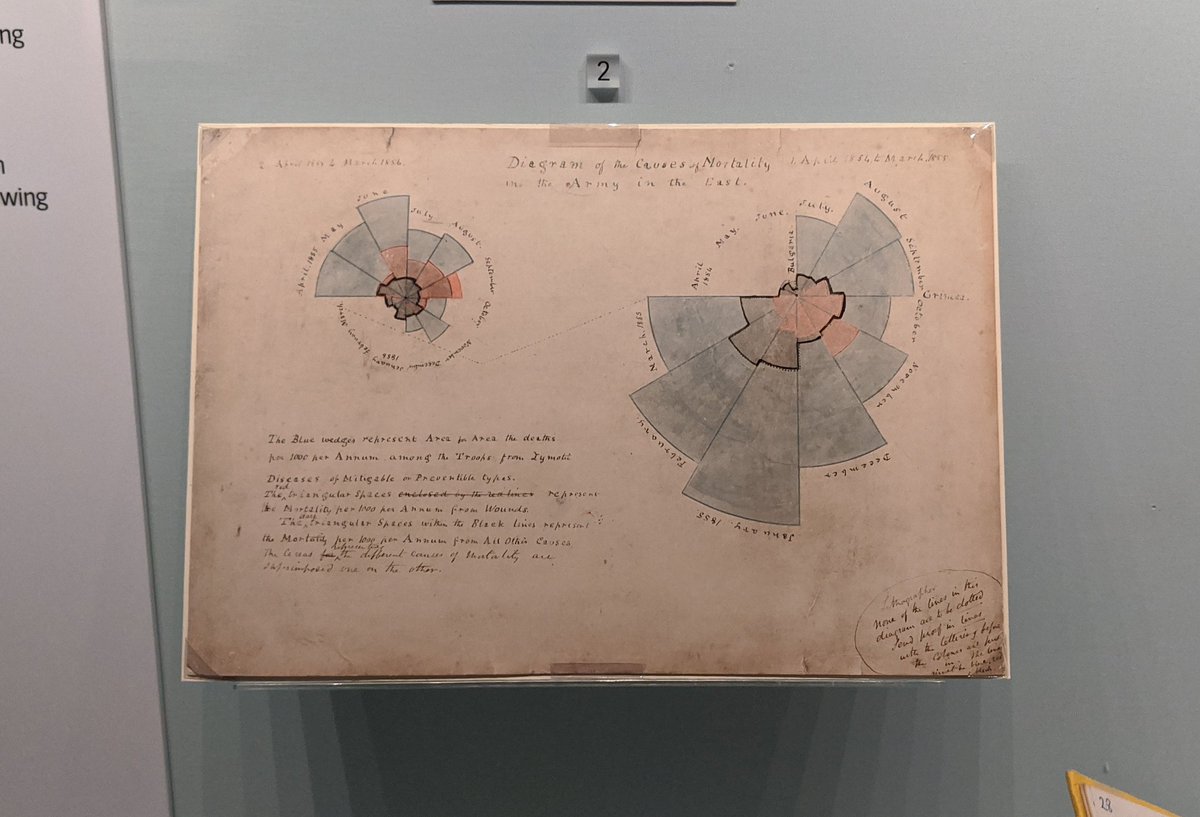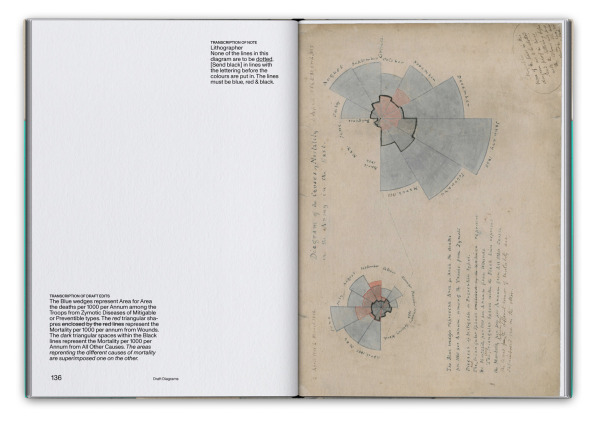

Blue is supposed to represent deaths from certain diseases, red measures deaths from wounds from the war, while black represents deaths from all other causes. Blue is takes up most of the space in each triangle followed by black and then red. There are three main colors used in this diagram. Then, the text explanation at the bottom left takes up the second most space, followed by the title and labels. The triangle graphs take up most of the page, the one on the right in particular. Visual elements that can be seen include: The title, the two sets of triangles, labels, and an explanation of the data in the bottom left of the page. The statistical data presented by the infographicss garnered the government's attention and achieved Nightingale's intended effect.

After the infographicc was published, death toll reduced from 42% to 2% (Sidney, 1912). It was meant to illustrate the alarming death rate that arose as a result of poor conditions at the facilities on the war front, instead of from actual combat druing the Crimean War. Intended Audiences Nightingale's statistics were chiefly targeted at the British governemnt and the Sanitary Commission. The resulting Renkioi Hospital had a death rate of 1/10th that of the original Scutari Hospital (Wikipedia). Isambard Kingdom Brunel was chosen by the British Government to create prefabricated hospitals that could be efficiently built and shipped to Dardanelles. Appalled by the awful conditions, Nightingale pleaded in The Times for the government to solve the improper hospital conditions. The hospital was even lacking equipment to properly process food for the patients. Medicines were lacking, hygiene was neglected, and disease was spreading, leading to more deaths. The apathetic medical staff was overworked and poorly caring for the soldier patients. When Florence Nightingale arrived in the Crimea on October 21, 1854, she found the hospital system in disarray.


 0 kommentar(er)
0 kommentar(er)
